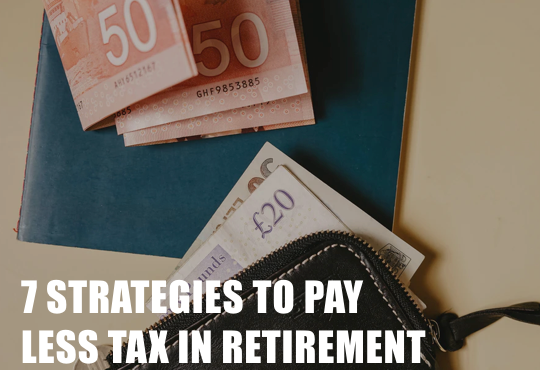Strategies and Solutions
The increasing number of seniors who opt to continue working during their retirement years face the challenge of finding ways to minimize their tax burden on multiple sources of income. This includes income from employment, the Canada Pension Plan, Old Age Security, pensions, registered investments, and non-registered investments. The challenge lies in striking a balance between these various sources of income for individuals in their late 60s and early 70s.
Delaying Government Benefits and Optimizing Tax Deductions
Many financial planners suggest that workers in their 60s delay taking their Canada Pension Plan (CPP) and Old Age Security (OAS) until they reach the mandatory age of 70. This not only reduces taxable income, but it provides a larger income later in life. Those who delay CPP to 70 from 65 can receive an extra 8.4% per year for five years, which amounts to up to 42% more. Delaying OAS for five years until the age of 70 results in an extra 7.2% per year, equating to up to 36% more.
Older workers should also consider contributing to their Registered Retirement Savings Plans (RRSPs) until they reach 71, if they have the contribution room, as it will help reduce their taxes, according to Mr. Natale. He reminds workers that they can claim RRSP deductions in future tax years and that even if they are over 71 and cannot contribute to their own RRSP, they can still contribute to their spouse’s RRSP as long as it is before the spouse turns 72 and they have RRSP contribution room.
Income Splitting
Couples who are either married or common-law can also take advantage of different income-splitting opportunities, including pension income splitting, spousal RRSPs, and spousal loans to help lower the overall family tax bill.
With pension income splitting, higher-income-earning spouses can transfer up to 50 per cent of their eligible pension income to their lower-income-earning spouses. That includes income from a registered company pension plan. Spouses can also split income from their registered retirement income fund (RRIF) with their partners, but they need to be 65 or older.
Meanwhile, a spousal RRSP enables couples with varying incomes to save for retirement and split income to reduce taxes. Finally, a spousal loan enables a higher-earning spouse to lend non-registered funds to the lower-earning one at the Canada Revenue Agency’s prescribed rate. The borrower spouse has to pay the interest by Jan. 30 of the following year, each year. The idea is to invest the money loaned and earn a higher return than the prescribed rate, and have the income taxed in the lower-income earner’s hand at a lower rate.
Older couples with a big age difference can also take advantage of rules that enable them to use the younger spouse’s age to determine the older spouse’s minimum RRIF withdrawals. If you don’t need the income, it might be best to take a smaller amount using the younger spouse’s age. Having those lower withdrawals means greater tax deferral, which can lead to less OAS clawback.
Strategies for Investing and Charitable Giving
Investors in their 60s can consider a variety of strategies to reduce taxes on their investment income, such as moving funds to different accounts or making charitable donations. Some planners suggest that investors may want to withdraw from their RRIFs early and transfer the funds to their tax-free savings account (TFSA). Another option is to sell certain assets and realize the capital gains before receiving other retirement income and benefits to avoid a higher tax bill in the future. There is also the possibility of the federal government increasing the tax rate on capital gains, which makes it worth considering for some investors.
In addition, there are tax incentives for those who donate non-registered investments directly to charity, as they do not have to pay taxes on the capital gain and receive a charitable receipt. Contributing to grandchildren’s registered education savings plans or registered disability savings plans may also be an option, as they receive government top-ups, thereby reducing investment income subject to taxes. These strategies can help reduce non-registered assets, as long as the individual is not concerned about outliving their funds.



